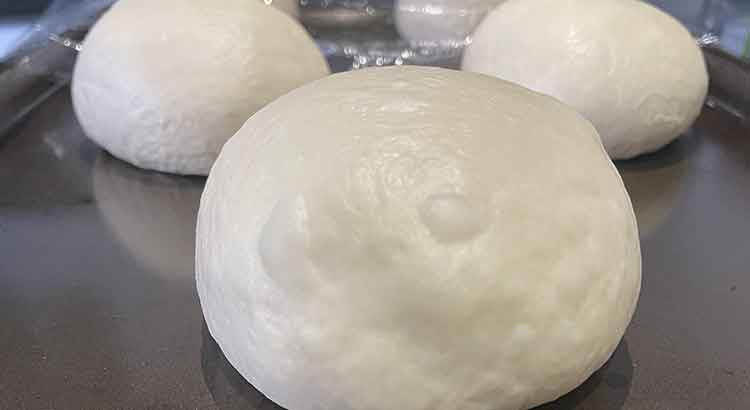Have you ever found yourself in a situation where your homemade pizza dough turns out super elastic? It can be frustrating, right? But fret not, because we’re here to shed some light on this common issue and help you fix it. So, let’s dive in and discover why your pizza dough is too elastic and learn some simple solutions to make it just right.
Why Your Pizza Dough Is Too Elastic
So, you’re ready to make your own pizza at home, but there’s just one problem: your pizza dough is too elastic. Don’t worry, you’re not alone! Many people face this issue when they start experimenting with homemade pizza. But why does it happen, and how can you fix it? Let’s dive in and find out.
Too Much Gluten
One common reason for excessively elastic pizza dough is the presence of too much gluten. Gluten is a protein found in wheat flour that gives dough its elasticity. When you mix and knead the dough, the gluten strands develop and form a network, which gives the dough its structure. However, if you over-knead the dough or use high-protein flour, you can end up with an overly elastic dough.
Over-Kneading
Over-kneading the dough can lead to an excess of gluten development, resulting in an elastic texture. When you knead the dough for too long, you’re essentially overworking the gluten, causing it to become too strong and stretchy. To avoid this, try kneading the dough just until it reaches a smooth and supple consistency, rather than continuing to knead beyond that point.
High-Protein Flour
The type of flour you use can also affect the elasticity of your pizza dough. High-protein flours, such as bread flour or high-gluten flour, contain more gluten than all-purpose flour. While these flours can result in a chewier and more structured crust, they can also make the dough excessively elastic. If you’re using a high-protein flour and encountering this issue, try switching to all-purpose flour or a blend of all-purpose and bread flour to reduce the gluten content.
Lack of Resting Time
Resting the dough allows the gluten to relax and the dough to become more pliable. If you skip or shorten the resting time, the gluten strands may not have enough time to fully relax, resulting in a dough that’s too elastic. Make sure to follow the recipe instructions regarding resting times, as they play a crucial role in achieving the desired texture.
How to Fix a Pizza Dough That Is Too Elastic
Now that you know why your pizza dough is too elastic, let’s explore some ways to fix it and achieve the perfect dough consistency.
Adjusting the Moisture Level
The moisture content of your dough can greatly impact its elasticity. If your dough is too elastic, it might be too dry. Adding a little more water can help soften the dough and make it easier to work with. Gradually add small amounts of water while kneading until the dough becomes more pliable and less elastic.
Incorporating Fats or Oils
Adding fats or oils to your pizza dough can also help reduce its elasticity. Fats like olive oil, vegetable oil, or melted butter can help to relax the gluten and make the dough more manageable. Incorporate a small amount of fat or oil into your dough during the mixing or kneading process. This will help to coat the gluten strands and prevent them from forming a tight network.
Using a Different Mixing Technique
The way you mix your dough can also affect its elasticity. Instead of using a traditional kneading method, you can try a gentle folding technique. Gently fold the dough over itself several times instead of vigorously kneading it. This technique helps to develop the gluten without overworking it, resulting in a less elastic dough.
Allowing the Dough to Rise Twice
Another way to fix overly elastic dough is by incorporating an additional rise. After the initial mixing and kneading, let the dough rise until it doubles in size. Then, gently deflate the dough and let it rise again. This double rise allows the gluten strands to relax further, resulting in a softer and more pliable dough.
Remember, fixing an elastic pizza dough might require some trial and error. Adjusting the moisture level, incorporating fats or oils, using a different mixing technique, and allowing the dough to rise twice are all effective methods to achieve the desired dough consistency. Experiment with these techniques and find what works best for you. Soon enough, you’ll be making delicious homemade pizzas with perfectly balanced dough!
Final Thoughts
And there you have it! We’ve explored the reasons why your pizza dough may be too elastic and provided you with practical ways to fix it. Making your own pizza dough can be a fun and rewarding experience, but it can also come with its challenges. Don’t get discouraged if your first attempts result in overly elastic dough – it’s all part of the learning process!
Remember, practice makes perfect. As you continue to experiment and adjust your techniques, you’ll gain a better understanding of how to achieve the ideal dough consistency. Don’t be afraid to make adjustments along the way, such as tweaking the flour type, kneading time, or incorporating different ingredients. Each batch of dough is an opportunity to learn and improve.
So, roll up your sleeves, dust your hands with flour, and give it another go. With time and practice, you’ll master the art of pizza dough, and soon enough, you’ll be enjoying homemade pizzas with just the right amount of elasticity. Happy pizza making!

